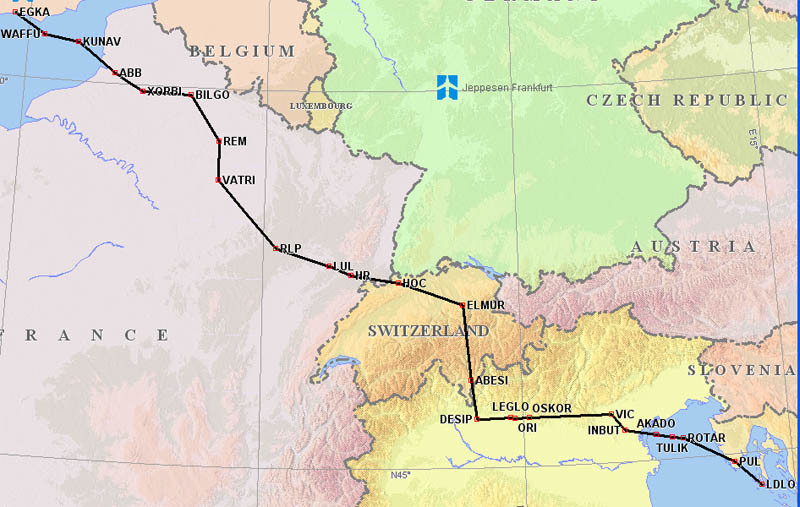After a few weeks of flying the TP I am already getting annoyed at being held down at FL240, a level I would have been happy to cruise at previously.
Here is a little film that nicely explains what actually happens in front of Jason's nose every time he reaches for his new heights:)
and more of PT6 from "Disney" -
NOTE: The second short clip was embedded as per David's recent advice, but it appears that this clip can be viewed only on the YouTube site itself. Go to YouTube and search this title, I guess ....
That first video is really good! Most I have seen are more like the second which can make it hard to visualise.
How hard is it to get a clearance above FL240? With the piston engine I only filed maybe FL220. Then to get a clearance to FL240 is always easy but FL250 is difficult as the upper airspace starts at FL245 so they would have to hand me over to the sector above who might not have my details etc. Is that an issue if you file for example FL260 right from the start?
"Upper airways" start at FL200, though one could argue about what you actually get at that point.
Certainly the routings which you can file via Eurocontrol are much more straight. For example you can cross Paris at FL200+ whereas anything below you get this

At FL200 you could cut out both of those kinks, and go across the Alps via RESIA which is otherwise possible only VFR, FL129...
In the lower airways you can file anything and then ask to fly anything different and nobody actually cares - subject obviously to actual restrictions so e.g. filing for FL140 and then asking to level off at FL100 (because you don't have oxygen  ) could, especially on a weekday, cause huge diversions around military airspace. This is a classic in NE France... tried that one a few times. But in many places you can just do that, so you can take advantage of Eurocontrol's acceptance of the FL140 route without actually flying it.
) could, especially on a weekday, cause huge diversions around military airspace. This is a classic in NE France... tried that one a few times. But in many places you can just do that, so you can take advantage of Eurocontrol's acceptance of the FL140 route without actually flying it.
I would not file FL200, even though I can just about reach it, because I might have to actually fly it, and it takes ~45 mins to get there and it is not fuel efficient (have to use "best power"). But it does open up a lot of routes. The problem is that you cannot generally file FL200+ but ask to fly below FL200 because the airway structure is very different.
I have known turboprop pilots who encountered constant difficulties flying above FL250, due to their low speed relative to a lot of jet traffic. Airliners are normally FL300+ enroute but not the e.g. London-Brussels stuff which might climb to FL190/210 only.
Reportedly, turboprop traffic encounters extra difficulties ~FL300, due to its low speed.
So far (4400nm) I have had absolutely no trouble getting cleared to 270 or 280 even on short flights. As I mentioned on another thread I even got 290 Neg RVSM. And they always ask for requested enroute level and don't seem to care what I filed.
I have known turboprop pilots who encountered constant difficulties flying above FL250...
The same is true for us Citation drivers... at Mach .60 to .75 (which is the limit for most Citations except some old 650s and of course the X) you are considered to be a "road block" on the airways for airliners that usually cruise between .78 and .85 . So we have the option to stay below 250 (upper airspace begins at FL245) or climb rapidly above 360 which is the upper limit for most airliners. The latter does make sense only for flights of one hour or more.
And then there are countries (like Germany) who don't want you to fly in the upper airspace on short trips. So typically everybody (Lufthansa included...) is limited to FL240 on a flight from Stuttgart to Berlin - unless your constant whining about turbulence and "riding the tops" raises some compassion in a controllers heart.
It has worked for me domestically in UK eg between Newquay and Oxford of Oxford and Hawarden. Not tried on a trip within Germany before.
What sort of pressurisation warning systems and supplemental O2 do you have Jason? Would be interested to know how fast you could go in an emergency descent.
Do you have a paper PLOG or any way of highlighting MSAs above 10k? Large lumps of granite get me a bit twitchy even a long way above them, with the Mont Blanc 18,300 MSA being a particular one to focus the mind.
You get an alert if the cabin goes over 10k and an alarm if it goes over 12k. At that point the emergency bleed air operates to pressurise the cabin assuming that you are unconscious. There is a pilot oxygen tank and mask and chemical O2 generators for the passengers. But with gear out and PCL at flight idle you could descend at 5kft/min+.
We also have TAWS-B for terrain.